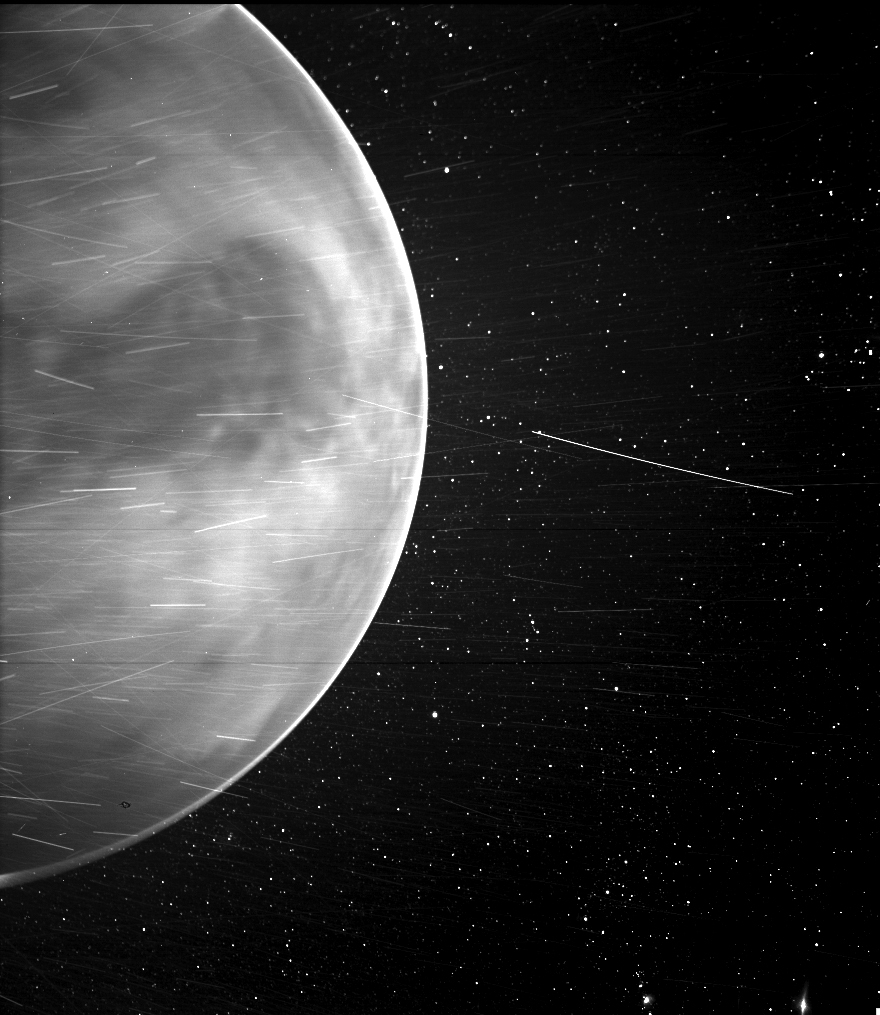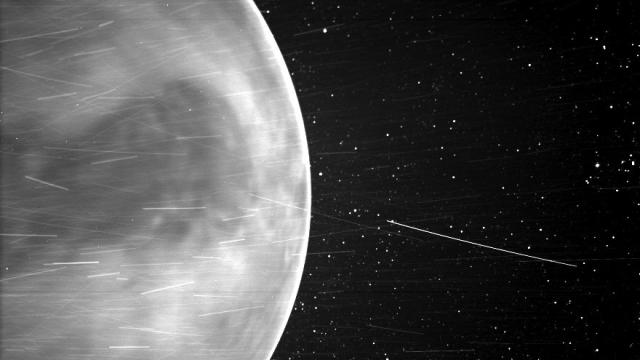A recent flyby of Venus by NASA’s Parker Solar Probe has resulted in an unexpectedly good image of the scorched planet, along with the revelation of a previously unknown capacity for one of the spacecraft’s instruments.
The Parker Solar Probe mission, launched in 2018, has nothing to do with Venus. The NASA spacecraft is merely using the planet’s gravity to get closer to its real target: the Sun. Eventually, after several more flybys of Venus, the Parker probe will come to within 6.9 million km of our host star. The primary goal of the mission, expected to last until 2025, is to better understand the Sun’s solar winds and corona.
This image of Venus was captured in July 2020, when Parker was just 12,380 km from the planet’s surface. The onboard Wide-field Imager for Parker Solar Probe, or WISPR, snapped this remarkable view of the planet, according to NASA.

WISPR consists of two optical telescopes, and they’re designed to capture images of the solar corona, the area of plasma around the star, in visible light (more about this device here). But here’s the thing — that dark splotch on Venus is a surface feature, namely Aphrodite Terra — the biggest highland region on the planet. Aphrodite Terra appears dark because it’s cooler than the area around it. Venus’s surface is obscured by its thick atmosphere, but this image implies that WISPR can detect thermal radiation in addition to visible light.
That WISPR can do this comes as a complete surprise to the Parker team, according to Angelos Vourlidas, the WISPR project scientist from the Johns Hopkins Applied Physics Laboratory (APL). This device is “tailored and tested for visible light observations,” said Vourlidas in the NASA statement, saying they “expected to see clouds, but the camera peered right through to the surface.”
“WISPR effectively captured the thermal emission of the Venusian surface,” added Brian Wood, an astrophysicist and WISPR team member from the U.S. Naval Research Laboratory, in the NASA release.
WISPR, it would seem, has an unexpected capacity, namely the ability to detect near-infrared wavelengths of light. If confirmed, NASA says this could alter the scope of the missions to include investigations of dust around the Sun and also within the inner solar system.
[referenced id=”1223576″ url=”https://gizmodo.com.au/2020/06/a-green-glow-has-been-detected-in-the-martian-atmosphere/” thumb=”https://gizmodo.com.au/wp-content/uploads/2020/06/17/kcu1v0e436lx16lroujl-300×169.jpg” title=”A Green Glow Has Been Detected in the Martian Atmosphere” excerpt=”The Red Planet has a touch of green, according to atmospheric observations performed by the ExoMars Trace Gas Orbiter. It’s the first time this effect has been documented on a planet other than Earth.”]
As for those bright streaks of light seen in the image, those are actually cosmic rays picked up by the camera. That’s a normal thing that happens.
WISPR also spotted a bright rim around the edge of Venus. This is probably nightglow, which is caused by oxygen atoms in the upper atmosphere. A similar thing happens on Mars, where the phenomenon produces a stunning green glow.
